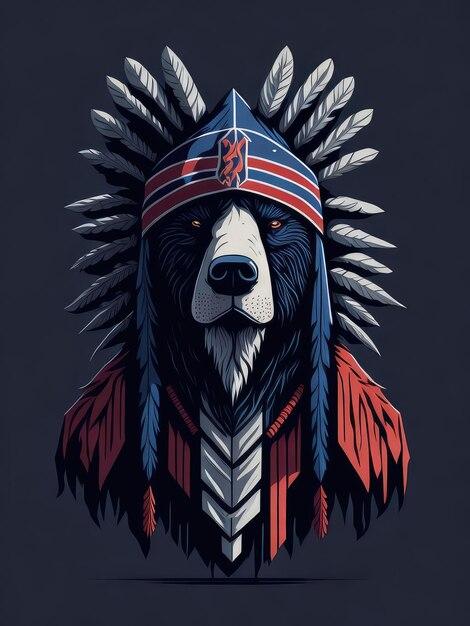The word for “bear” in various Native American languages offers a fascinating lens through which we can examine not only linguistic diversity but also the rich tapestry of cultural meanings and values embedded in those languages. The representation of the bear across Native American cultures reveals much about the relationship between humans, nature, and the intricacies of ecosystems. As we delve into the linguistic aspects surrounding this powerful symbol, we invite a deeper understanding of cultural relativism, particularly in how Indigenous peoples perceive and articulate their relationship with the natural world.
In many tribal communities, the bear is not merely an animal but a figure steeped in metaphorical and spiritual resonance. Known for its strength and resilience, the bear embodies traits such as courage, introspection, and healing. The names attributed to bears in different languages often reflect these qualities, highlighting distinct cultural narratives. For example, the Lakota term “mahpiya,” meaning “cloud,” used poetically to describe the bear’s presence, speaks to its perceived connection to the spiritual realm. This linguistic choice implies that the bear transcends its physical form, becoming a vehicle for cultural values and beliefs.
To convey the importance of the bear, many tribes narrate creation stories that position the bear as a creator or a protector. The Chippewa people, for instance, recount tales where the bear plays a central role in teaching humans about survival and respect for nature. The linguistic choices in these narratives serve not only as a means of communication but also as a conduit for cultural identity and values, preserving teachings through generations.
Furthermore, understanding the word for “bear” in various Native American languages compels us to consider the perspective of cultural relativism. Language is foundational to cultural expression, and each word encapsulates a worldview. The term for bear in the Cree language, “mukwa,” is an example of this encapsulation. Here, the linguistic element provides insight into how the bear is perceived as a teacher of humility, demonstrating the community’s values regarding humility and coexistence with powerful beings.
Moreover, the bear’s sensory world profoundly influences the lexicon surrounding it. Native speakers often utilize terms that evoke sensory experiences—sights, sounds, and actions linked to the bear’s habitats. The Tlingit people, for example, have intricate words depicting various aspects of bear behavior, from foraging to hibernation. This complexity underscores a profound interconnection between the language, the natural world, and the cultural significance attributed to the bear.
The symbolic functions of the bear are further complicated by their role within human society and spirituality. Many tribes regard the bear as a totem animal, representing familial lineage or clan identity. This spiritual connotation often necessitates a particular reverence when speaking its name, highlighting a belief that the bear’s essence can influence human behavior. The Cherokee phrase for bear, “dvgi,” is oftentimes uttered with caution, acknowledging the bear’s spiritual heft and its integral connection to rites and rituals. The language surrounding bears thus becomes imbued with respect and reverence, showcasing the delicate balance between humans and wildlife.
Another compelling aspect of how the bear is linguistically encapsulated is the intersection of ecological knowledge and storytelling. The bear, as a predator and omnivore, contributes to ecological balance. Educational narratives detailing the bear’s role in the ecosystem often incorporate vocabulary that reflects a nuanced understanding of environmental stewardship. In many cultures, these discussions are often launched with the term for bear, signifying the animal’s pivotal role in a broader ecological dialogue. This relationship is salient in the Haida narrative, where the bear’s seasonal behavior and migration patterns are related through storytelling and local dialects.
It becomes essential to consider how linguistic expressions concerning the bear can shift based on societal changes and modernization. Language is not static, and as Indigenous communities engage with contemporary socio-political dimensions, so too do the words for traditional symbols like the bear evolve. Efforts to preserve Indigenous languages highlight the importance of revitalizing terms associated with the bear, ensuring that these linguistic treasures continue to convey their rich, layered meanings for future generations.
In conclusion, the exploration of the term for “bear” within Native American languages transcends mere translation. It necessitates an appreciation of the intertwined nature of language, culture, and spirituality. Within this discourse lies a profound reminder of the responsibility humans share in safeguarding the earth’s biodiversity and upholding the narratives that affirm human connection to the natural world. As we listen to the linguistic echoes of the bear in Indigenous languages, we become aware of the wisdom, lessons, and identities that they embody, urging a reverence for the interconnectedness of all life.
